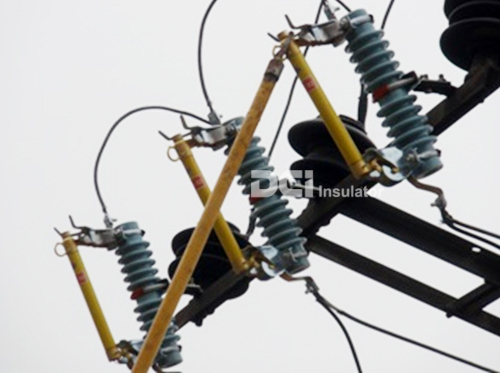Drop out fuse In electrical distribution, a fuse cutout or cut-out fuse is a combination of a fuse and a switch, used in primary overhead feeder lines and taps to protect distribution transformers from current surges and overloads. An overcurrent caused by a fault in the transformer or customer circuit will cause the fuse to melt, disconnecting the transformer from the line. It can also be opened manually by utility linemen standing on the ground and using a long insulating stick called a "hot stick".
A cutout consists of three major components:
The cutout body, an open "C"-shaped frame that supports the fuse holder and a ribbed porcelain or polymer insulator that electrically isolates the conductive portions of the assembly from the support to which the insulator is fastened.
The fuse holder, also called the "fuse tube" or "door", an insulating tube which contains the replaceable fuse element. When the contained fuse operates ("blows"), the fuse holder drops out of the upper contact, breaking the circuit, and hangs from a hinge on its lower end. This hanging fuse holder provides a visible indication that the fuse has operated and assurance that the circuit is open. The circuit can also be opened manually by pulling out the fuse holder using a hot stick.
The fuse element, or "fuse link", is the replaceable portion of the assembly that operates when the electrical current is great enough. 
|
